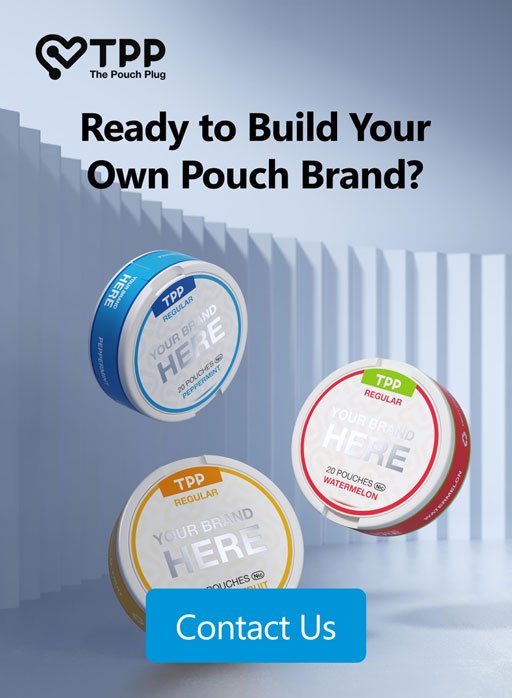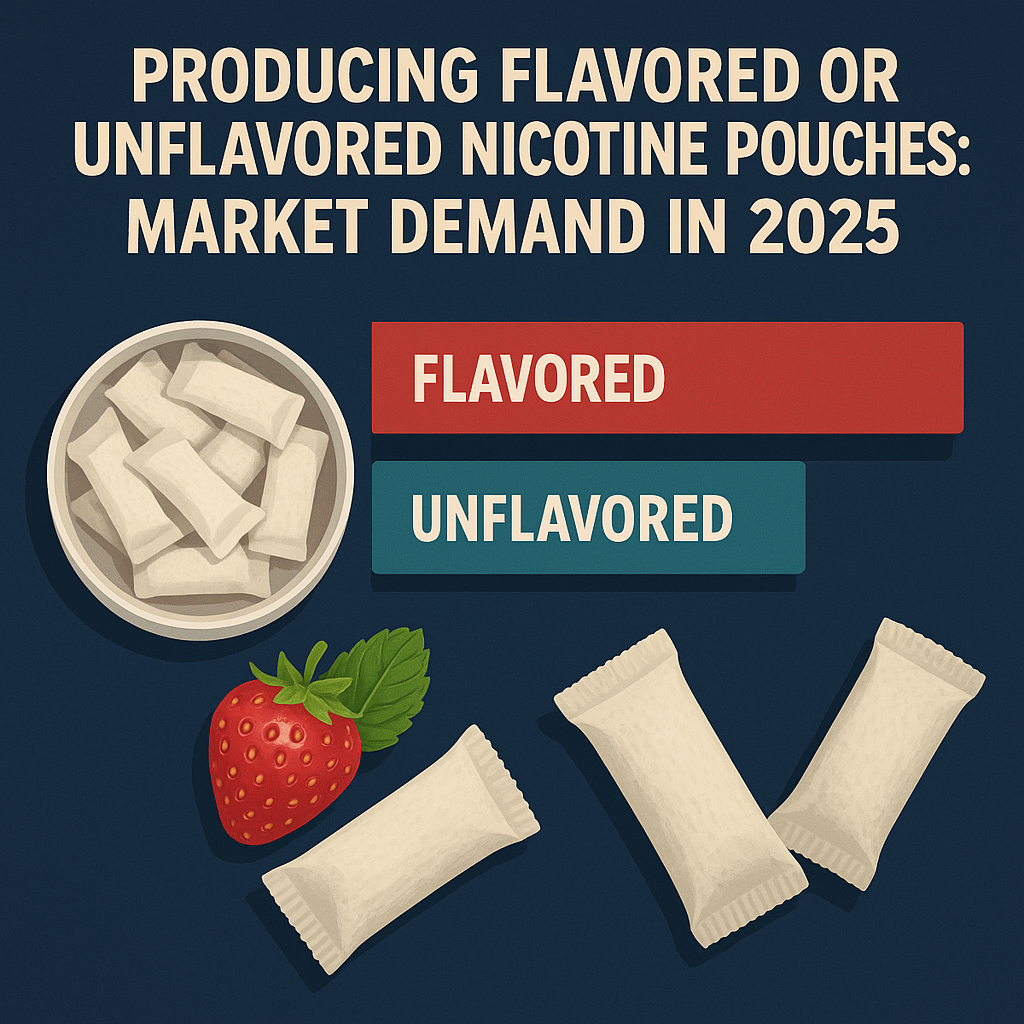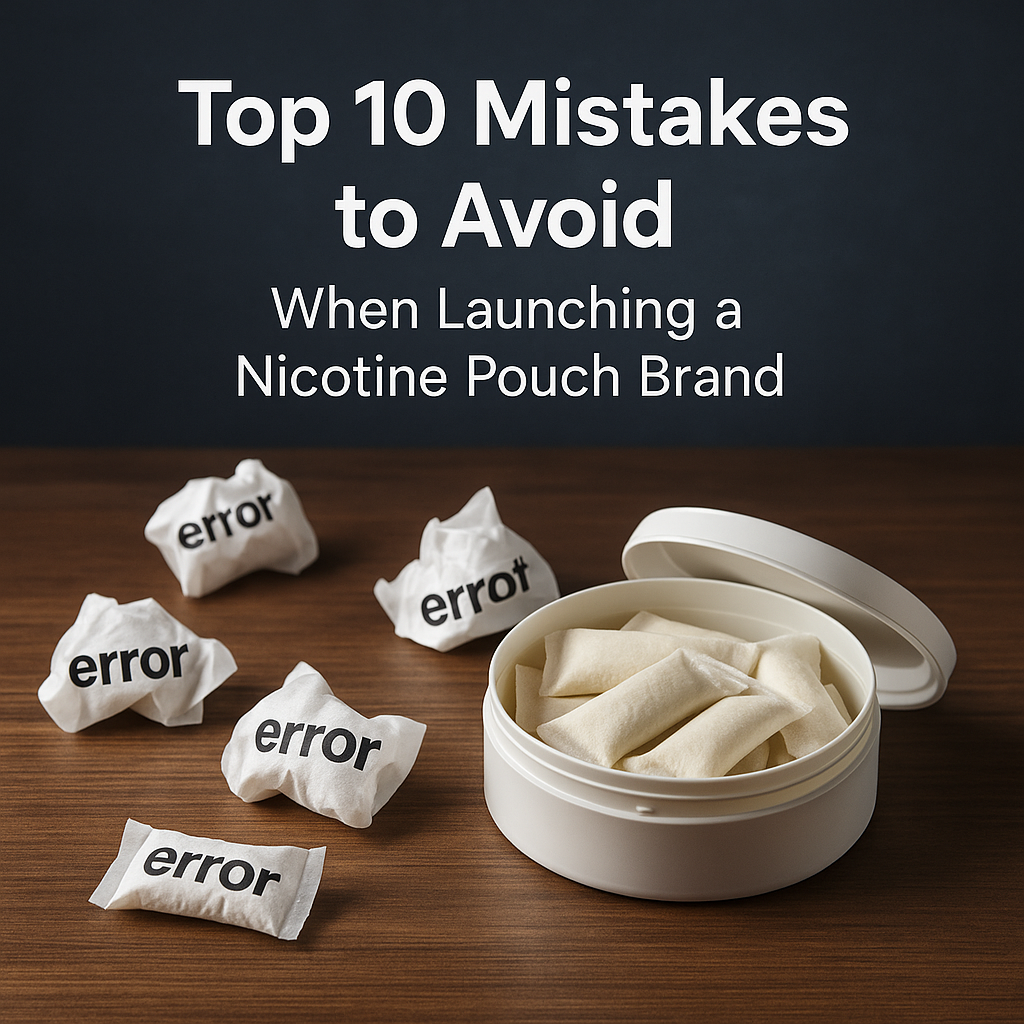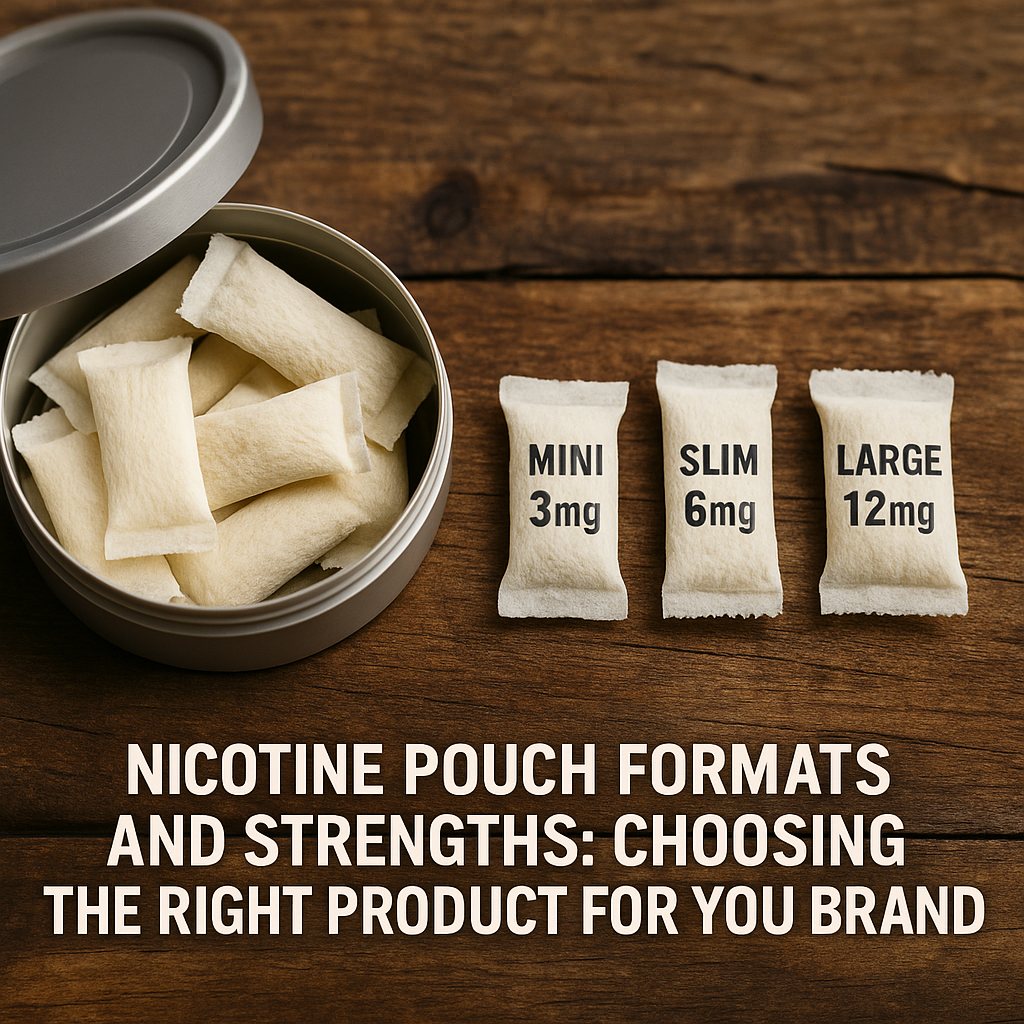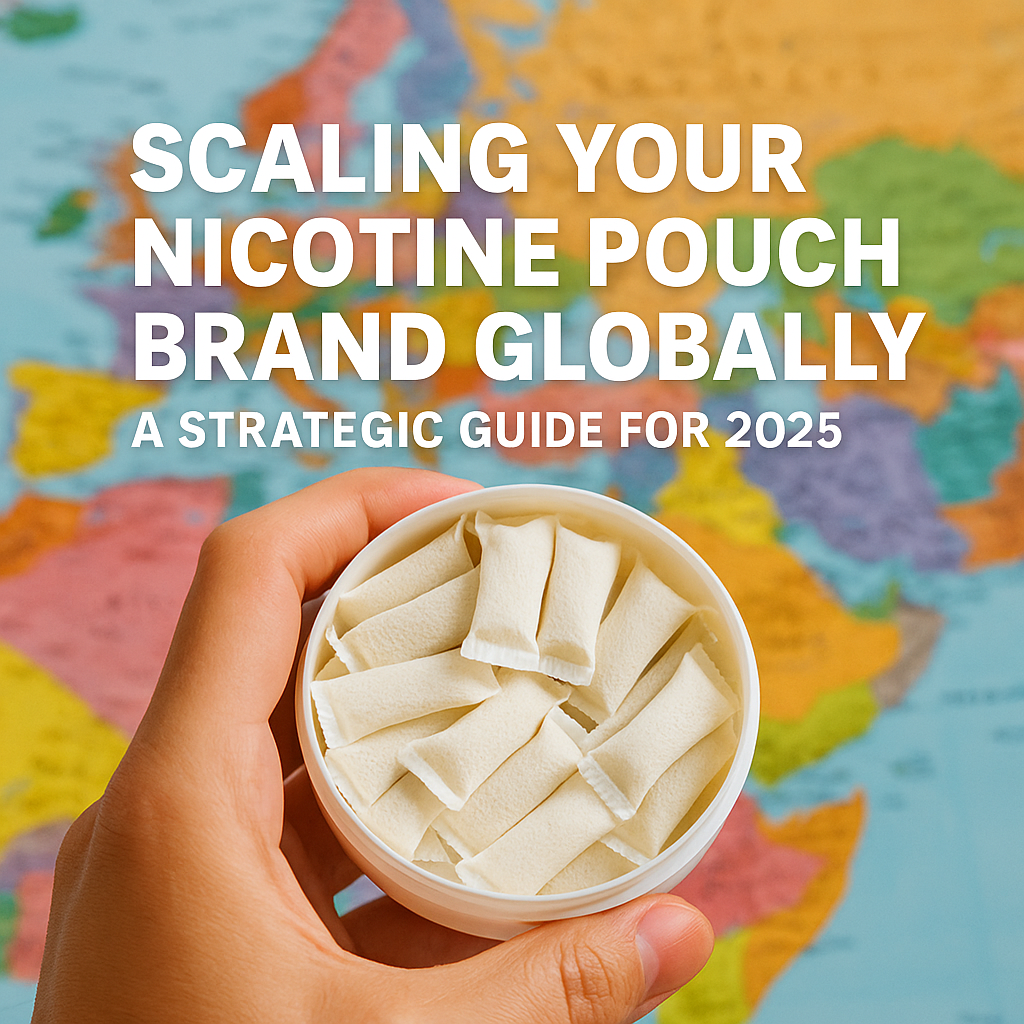Cost to Start a Nicotine Pouch Company or Brand (2025)
You’re thinking about starting a nicotine pouch company or building a new brand from scratch in 2025 — but how much does it really cost? Maybe you’ve seen the rise of names like ZYN, VELO, or Rogue and thought, “What would it take to launch something similar — my own brand?”
Before jumping into designs or flavors, here’s the real question:
What does it actually cost to start a nicotine pouch company or brand today?
This guide walks you through every step — from product dev to launch, and real numbers you need to know in 2025.
What You’re Really Paying For
Starting a nicotine pouch business isn’t just about manufacturing. There are multiple cost layers that stack up quickly if you’re not careful:
- Product development and testing
- Manufacturing setup or partnerships
- Packaging and design
- Compliance & third-party testing
- Branding, marketing, and education
- Distribution, storage, and global logistics
💡 Knowing where the money goes helps you avoid surprises and plan like a pro.
1. Product Development: Building the Formula
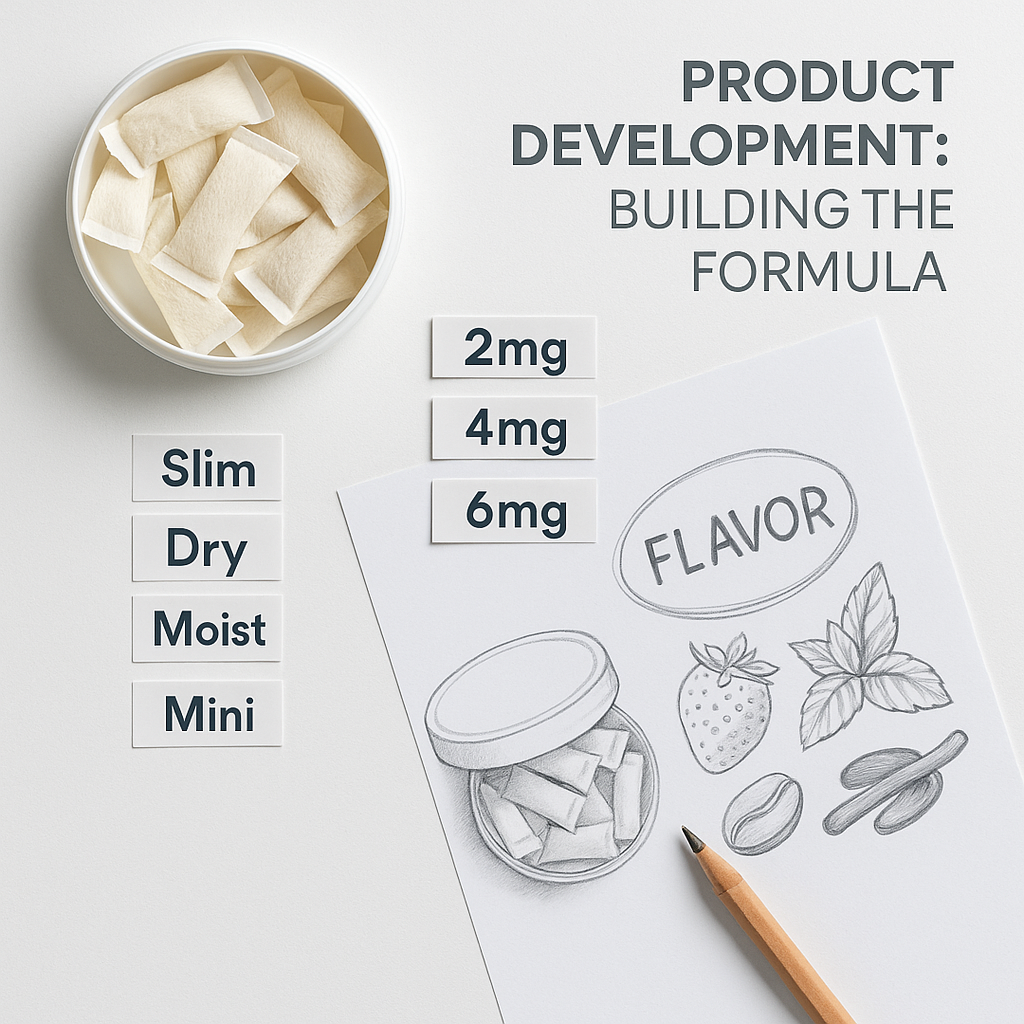
Before your first pouch hits the market, you’ll need to develop your product. That means:
- Picking flavors (fruit, mint, coffee, licorice, you name it)
- Defining nicotine strengths (2mg, 4mg, 6mg, etc.)
- Choosing the pouch type (slim, dry, moist, mini)
- Deciding on the texture, material, and portion feel
Each choice affects how your product tastes, feels, and performs. You’ll want consistency, consumer appeal, and shelf stability.
This phase usually involves:
- Formulation with a lab partner — someone who understands nicotine, flavors, and pouch chemistry.
- Taste testing and focus groups — to validate your assumptions and preferences.
- Small batch trials — useful for sampling to retailers or early adopters.
- Shelf life testing — this checks long-term stability, flavor retention, and pouch moisture.
💡 Pro Tip: Many startups skip deep testing early on. That’s risky. Bad taste = bad reviews = bad start.
👉 Read more about formulation and flavoring in this article. ✅
2. Manufacturing: In-House vs. Contract
This is the most critical decision you’ll make early on.
Option 1: In-House Manufacturing
This route means building and running your own production facility—from sourcing ingredients to operating machines.
At first glance, the idea of having full control might seem appealing. But the reality?
- Setup can take 12 to 36 months (or more), depending on machinery, approvals, and staffing.
- It demands a large financial investment that varies significantly by location, scale, and local regulations.
- Most importantly, it requires deep operational knowledge in nicotine handling, hygiene standards, and regulatory compliance.
Many companies underestimate the learning curve. Being good at branding and distribution doesn’t always translate to successful production. In fact, production missteps can delay or derail a promising launch entirely.
You risk losing focus on what you’re actually good at—sales, marketing, and brand building—while navigating unfamiliar ground.
Option 2: Contract Manufacturing
Instead of reinventing the wheel, many brands choose to partner with experienced manufacturers like The Pouch Plug.
With this model:
- You bring the vision—your flavors, design, and brand story.
- Your manufacturing partner brings the infrastructure, expertise, and speed to produce high-quality pouches efficiently.
Pros:
- Launch in as little as 6 weeks with full production handled for you.
- Avoid high upfront costs, licensing, and hiring headaches.
- Rely on proven systems for quality, shelf life, and regulatory compliance.
Cons:
- You operate within an existing system (e.g., predefined pouch types, Minimum Order Quantities).
💡 That said, most successful startups begin with contract manufacturing—and many stay there. Why?
Because it lets you focus on what actually grows the business: building a brand, scaling marketing, and reaching new customers.
Meanwhile, your manufacturing partner ensures the product shows up on time, consistent, and compliant—without you ever needing to touch a machine.
3. Packaging & Design: What’s on the Shelf Matters
Design sells. Even the best product won’t get picked up if the label is boring.
You’ll need to invest in:
- Label + can design that pops and matches your brand identity.
- Material choices (metal, plastic, eco)—these affect shipping cost, sustainability, and perceived value.
- Compliance labels (warnings, childproofing) that vary by region but are non-negotiable.
- Production mockups and packaging rounds to finalize appearance and print accuracy.
🧠 Consumers often associate visual quality with product safety and taste. Even your color palette can influence trust.
👉 Explore how top brands like Swedish Match handle design.
4. Branding & Marketing: Getting Noticed

Marketing isn’t optional—it’s your lifeline in a crowded space.
Budget for:
- Brand identity (logo, fonts, brand colors) that reflect your unique edge.
- Website development + SEO to attract traffic from day one.
- Launch ads (Meta, Google, influencer promos) but be strategic with launching ads. Because this niche faces restrictions on platforms like Meta, Google, and even with influencers..
- Product storytelling (videos, reels, lifestyle shoots) that explain your mission.
- Education (blog content, how-to guides) to build trust and authority.
Without a plan for outreach, your product may never leave the shelf—no matter how good it is.
👉 Read our full startup guide for inspiration.
5. Distribution & Warehousing: Getting It Out There
Once you’ve produced pouches, you’ll need to store and ship them efficiently.
Key costs include:
- Storage (temperature-controlled preferred) to keep pouches fresh.
- Fulfillment (pick & pack, labeling, tracking) is either handled in-house or by third-party logistics (3PL).
- Local and international logistics, especially if shipping to the U.S., EU, or the Middle East.
- Duty/tax if exporting — check with local customs authorities.
- Inventory software or 3PL platforms to track orders and stock levels.
🌎 If you’re shipping globally, choose a partner with proven export systems and region-specific compliance knowledge.
What’s the Minimum Budget?
It depends, but here’s a general framework for budgeting in 2025:
Small-scale launch:
- Budget: $25,000–$50,000 USD
- Ideal for launching 1–2 SKUs and testing market fit
Mid-scale launch:
- Budget: $75,000–$150,000 USD
- Includes stronger branding, initial marketing, multiple flavors
Large-scale expansion:
- Budget: $200,000+ USD
- Custom tooling, paid campaigns, full product lineup
🎯 These are not hard numbers but starting points to help you plan.
Funding Options: How to Afford It
No $100K sitting around? No worries. You’re not alone.
Explore:
- Angel investors or seed funding — often from high-net-worth individuals in tobacco or CPG.
- Small business loans or credit lines — especially for companies with inventory.
- Crowdfunding (Kickstarter-style) — to build a community and raise funds.
- Strategic joint ventures — like partnering with a vape brand or distributor.
- Bootstrapping with a smaller MOQ and scaling gradually — the most common approach.
🔑 Start lean, prove your idea, then scale when it makes sense.
Start Lean, Then Scale
Many iconic brands didn’t begin with millions. They:
- Launched with contract manufacturers
- Sold online to build loyal customers
- Reinvested profits into R&D, ads, and expansion
This approach allows you to learn, adapt, and improve before betting big.
Final Thoughts: What Should You Do Now?

If you’re serious about launching a nicotine pouch brand in 2025:
- Refine your brand vision
- Get quotes and MOQ info from contract manufacturers
- Set a lean but realistic marketing budget
- Choose a product formula that stands out
At The Pouch Plug, we’ve helped dozens of brands go from idea to product. With 12+ years of Swedish experience in nicotine pouch manufacturing, we combine tradition with innovation and offer full global support.
👉 Talk to our team today about how to get started, and let’s set you up correctly from the start.
FAQ: Common Startup Questions
What’s the average startup cost for a nicotine pouch brand?
Depending on your launch size, it can range from $25K to over $200K USD. Most brands begin with contract manufacturing to minimize overhead and test their product before investing heavily.
What are the typical minimum order quantities (MOQs)?
MOQs vary by manufacturer but typically range from 10,000–50,000 cans per SKU. This helps keep per-unit costs manageable while allowing factories to operate efficiently.
How fast can I launch a brand?
Using a contract manufacturer, most brands can launch within 6–12 weeks. This depends on flavor approval, label design, and regulatory checks. In-house setups can take 6+ months.
Is manufacturing in Sweden better?
Yes, many top brands use Swedish manufacturing due to decades of smokeless expertise, high standards, and flavor quality. The Pouch Plug was founded in Sweden and built on deep roots in the snus industry, blending Nordic tradition with modern innovation.
Where can I find legal guidance for my brand?
Check out this legal resource for country-by-country regulations on oral nicotine products. Each region has its own laws.
Can I fund my startup with a partner?
Absolutely. Many new brands bring in partners who handle logistics, funding, or marketing in exchange for equity. It’s important to define clear roles early.

